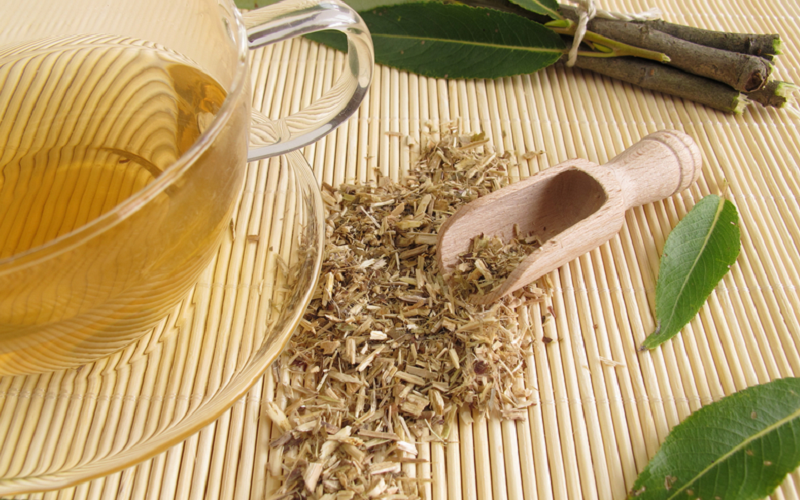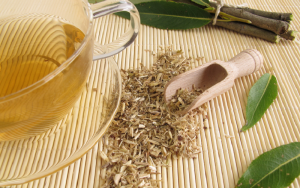
In a world where we’re increasingly looking for natural, non-invasive alternatives for health and wellness, Mother Nature often presents us with surprising allies. One such ally in the quest for pain relief is the humble White Willow tree. Its bark has been used for centuries as a natural remedy for reducing pain and inflammation. Here we go deep into the heart of White Willow bark, its active ingredient Salicin, and the hidden benefits it holds for pain alleviation.
Contents
Introduction to White Willow Bark
Revered for centuries by healers and physicians alike, the White Willow tree, also known as Salix alba, has often been regarded as a source of powerful natural medicine. It’s not the leaves or the roots of this beautiful tree that draw attention, but rather its unassuming bark.
Brief History and Origin of White Willow Bark
The White Willow tree, native to Europe and Central Asia, has been a part of human history for over 5,000 years. In fact, remnants of the tree have been found at archaeological sites of ancient civilizations, hinting at its long-standing use.
The Greeks, under the guidance of the famous physician Hippocrates, used to chew on the raw bark of this tree to reduce fever and inflammation. Native American tribes also recognized the benefits of the White Willow, using it in traditional healing practices to alleviate pain and other ailments.
By the 19th century, the therapeutic properties of White Willow bark were well acknowledged in the world of science. Chemists were able to isolate and identify Salicin – the active compound responsible for the pain-relieving effects. This breakthrough discovery eventually led to the creation of a synthetic variant, the drug we now know as Aspirin.
The Link Between White Willow Bark and Pain Management
But what makes White Willow Bark so effective in pain management? The answer lies in its ability to interfere with the body’s pain signaling system. The active compound, Salicin, is converted by the body into Salicylic Acid, which has the ability to inhibit certain enzymes related to pain and inflammation.
Thus, this incredible bark has earned its place in the natural wellness sphere, demonstrating that when it comes to alleviating pain, nature has equipped us with some potent resources. This understanding leads us to a closer look at Salicin, the driving force behind the bark’s powerful effects.

Understanding Salicin: The Active Ingredient in White Willow Bark
White Willow Bark’s pain-relieving properties are deeply rooted in one powerful compound: Salicin. But what exactly is Salicin, and how does it work in our bodies to alleviate pain?
What is Salicin and How it Works
Salicin is a type of chemical known as a salicylate. Found naturally in the bark of the White Willow tree, it serves as a defense mechanism against harmful pests. But when ingested by humans, it embarks on a unique journey within our bodies.
Once consumed, Salicin is metabolized into salicylic acid in our digestive system. This salicylic acid then inhibits the production of prostaglandins – substances in the body that promote inflammation, fever, and pain signals. By curbing the production of these pain and inflammation mediators, Salicin indirectly contributes to pain relief and reduction in inflammation [1].
Comparison of Salicin and Synthetic Aspirin: Similarities and Differences
It’s interesting to note that Aspirin, or acetylsalicylic acid, a common synthetic pain relief medication, operates on a similar mechanism. Aspirin also works by inhibiting prostaglandin production, thus relieving pain and reducing inflammation. In fact, Aspirin was developed by modifying salicylic acid, inspired by the natural pain-relieving properties of Salicin.
However, there are a few critical differences between natural Salicin from White Willow bark and synthetic Aspirin. One of the most notable differences lies in their effect on the stomach lining. Aspirin, being a strong acid, can sometimes cause stomach discomfort and even lead to ulcers in sensitive individuals. In contrast, Salicin is gentler on the stomach, being metabolized into salicylic acid only after entering the bloodstream, thereby reducing the risk of stomach-related side effects.

The Science Behind White Willow Bark’s Pain Alleviation Benefits
While ancient knowledge and anecdotal evidence have long supported the use of White Willow bark in pain management, it is through scientific research that we can truly validate its effectiveness.
Overview of Existing Research and Studies
Numerous studies have been conducted to investigate the efficacy of White Willow Bark in managing pain. A meta-analysis published in the American Journal of Medicine evaluated multiple trials and found that White Willow Bark was more effective than a placebo for short-term improvements in pain and function.
Moreover, a randomized study published in the journal Rheumatology compared the effects of White Willow Bark extract and conventional medicine in patients with lower back pain. The study concluded that patients receiving White Willow Bark extract experienced a significant reduction in pain compared to those receiving conventional treatment.
These studies, among others, provide scientific backing to the traditional use of White Willow Bark in pain management, suggesting that it could be an effective natural alternative for those seeking relief from pain [2].
White Willow Bark’s Efficacy in Different Types of Pain
Chronic Pain
Chronic pain, which persists for months or even years, can significantly impact quality of life. Some studies suggest that White Willow Bark may help manage chronic conditions like osteoarthritis and rheumatoid arthritis. While further research is needed, these findings indicate potential applications for White Willow Bark in long-term pain management [3].
Acute Pain
Acute pain, such as that from injuries, surgical procedures, or short-term illnesses, also seems to respond well to White Willow Bark. Some research indicates that the bark’s salicin content may expedite recovery and reduce discomfort during the healing process, making it a valuable tool for managing acute pain situations.
Inflammatory Pain
Inflammation often accompanies pain, and relieving inflammation can therefore contribute to overall pain reduction. The salicin in White Willow Bark appears to inhibit inflammatory processes, suggesting potential benefits for conditions characterized by inflammation, such as tendinitis or sinusitis [4].
Understanding the Safety and Side Effects of White Willow Bark
Despite its benefits, it’s important to note that White Willow Bark, like any substance, is not without potential side effects. Some people may experience digestive upset, allergic reactions, or, in rare cases, kidney problems. As a precaution, it’s not recommended for children or adolescents due to the risk of Reye’s syndrome, a rare but serious condition.
Therefore, before integrating White Willow Bark into a pain management regimen, it’s crucial to consult with a healthcare provider, especially for those with chronic health conditions or those currently taking other medications.

Practical Ways to Use White Willow Bark for Pain Relief
Having a strong understanding of the science behind White Willow Bark’s analgesic properties allows us to better appreciate its potential benefits. However, knowing how to use it safely and effectively is just as critical in our journey to harness its natural pain-relieving properties.
Dosage and Method of Use for Adults
White Willow Bark is available in various forms including capsules, tinctures, and teas. The recommended dosage can vary depending on the form and the severity of the pain. However, it is commonly suggested that adults take between 60 to 120 milligrams of salicin per day, which is typically found in 1 to 2 grams of dried White Willow Bark [5].
To help with absorption, it’s often recommended to take White Willow Bark with a meal. Always be sure to follow the dosing instructions provided by the manufacturer or your healthcare provider.
Recommendations for Specific Types of Pain
While there is no one-size-fits-all approach, certain methods might be more effective for different types of pain:
- For Chronic Pain: Regular intake of White Willow Bark in capsule or tincture form may be beneficial for long-term management. However, always remember to take breaks every few weeks to avoid potential side effects.
- For Acute Pain: A higher dosage may be used for immediate relief, but it should not be sustained for more than a few days without medical supervision.
- For Inflammatory Pain: Using a combination of oral intake and topical applications (like a White Willow Bark-infused cream) can target inflammation both internally and externally.
Contraindications and Warnings
Despite its natural origins, White Willow Bark should be used with caution, particularly in certain populations. It’s not recommended for children under 16, pregnant or breastfeeding women, or individuals with an allergy to aspirin. Those with bleeding disorders, kidney disease, or stomach ulcers should also avoid White Willow Bark due to potential complications. Always consult your healthcare provider before beginning any new supplement regimen.
Supporting Your Pain Management Regimen with White Willow Bark
While the use of White Willow Bark can provide significant relief from pain, it’s important to understand that it’s not a standalone solution. Effective pain management typically involves a holistic approach that combines lifestyle modifications, physical therapy, psychological support, and sometimes, medication [6].
Complementing White Willow Bark with Lifestyle Adjustments
A healthy lifestyle is the cornerstone of any effective pain management strategy. This includes maintaining a balanced diet, getting regular exercise, ensuring sufficient sleep, and managing stress.
Diet and exercise can significantly influence inflammation and pain levels. Including anti-inflammatory foods in your diet, such as fruits, vegetables, and whole grains, can help maintain overall health and aid in pain management. Regular exercise can keep joints flexible and muscles strong, thereby reducing pain and inflammation.
Stress management and sleep are also critical. Chronic stress and lack of sleep can exacerbate pain and hamper recovery. Practices like mindfulness, yoga, and adequate sleep hygiene can be powerful allies in the fight against pain.
Potential Synergy with Other Natural Remedies
White Willow Bark may also be complemented with other natural remedies, creating a synergy that enhances pain relief. These could include herbs and supplements like turmeric, omega-3 fatty acids, and bromelain, which all have anti-inflammatory properties. Topical treatments such as essential oils and heat or cold therapy can also be beneficial.
Remember, though, that it’s essential to discuss any new treatment regimen with a healthcare provider, particularly when combining multiple supplements or therapies.
Tips for Integrating White Willow Bark into Your Pain Management Routine
When incorporating White Willow Bark into your pain management routine, start with a lower dosage and gradually increase if necessary, monitoring your body’s response. Consistency is key when using natural remedies for pain management, as the effects may take some time to become apparent. As always, consult with your healthcare provider to ensure that the regimen you choose is safe and effective for your individual needs.
References
[1] How to Make Willow Bark Aspirin
[2] white willow: safe alternative for pain relief
[3] Willow bark
[4] Efficacy and Safety of White Willow Bark (Salix alba) Extracts
[5] The aspirin story – from willow to wonder drug
[6] Treatment of low back pain exacerbations with willow bark extract: a randomized double-blind study







